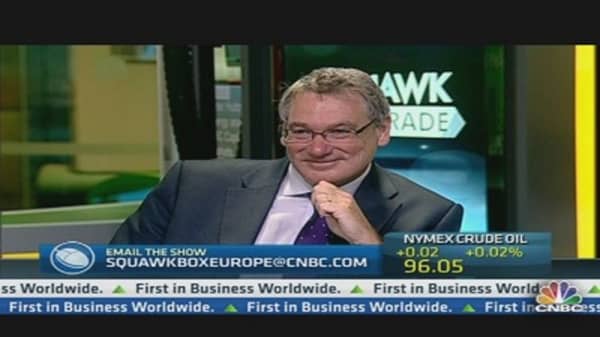Brent crude was down more than 1.5 percent, hovering just above $102 a barrel, while U.S. oil shed more than 1 percent to trade under $95.
McGillian noted that recent rallies towards $97 for U.S. crude have quickly subsided in the absence of clear signs that the U.S. economy is recovering.
"Some of the more nervous longs, as soon as they see momentum is slowing, look to bail from their positions," he said.
Brent crude has traded within a band of around $100 to $105 since early May. U.S. crude has similarly spent the last five weeks largely within the range from $91 to $97.
Brent's premium to U.S. crude narrowed on Tuesday to $7.44 in intraday trading, its lowest since May 22.
The spread has narrowed in each of the last five sessions as maintenance issues in the North Sea have been resolved and traders expect U.S. refineries to scale up their runs, drawing down crude stocks.
The 200,000 barrel per day Buzzard oilfield in Britain's North Sea was reported on Monday to have returned to full production following last week's outages.
"There's an expectation, relatively speaking, that demand is going to be stronger in the U.S., and that's supporting U.S. crude," said Phil Flynn, an energy analyst at Price Futures Group in Chicago, Illinois. "That's one of the major factors for the spread unwinding."
The Organization of the Petroleum Exporting Countries (OPEC) on Tuesday trimmed its forecast for 2013 world oil demand growth by 10,000 barrels per day (bpd) to 780,000 bpd.
But it expects demand to grow more quickly during the rest of the year than in the first half due to economic recovery and higher seasonal consumption, it said in a monthly report.
Increasing oil supplies and waning demand in China, the world's number two oil consumer, are likely to hold down prices.
Data from China showed a slowdown in the economy of the world's biggest energy consumer, with May exports weak and domestic activity struggling to pick up.
Implied oil demand rose in May at its lowest annual rate since September 2012, Reuters calculations show.
Further bearish news could surface later on Tuesday if oil stockpiles in the United States rise, as expected.
A Reuters poll of analysts expects U.S. commercial crude oil stockpiles to have risen last week on higher imports, in a counter-seasonal increase that might weigh on prices.




